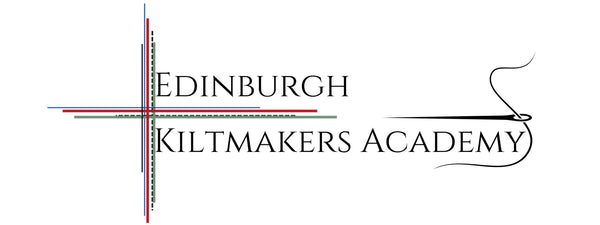Kiltmaking has had a long, dramatic and exciting history which EKA is very proud to uphold, teach to our students and be a wee part of.
Becoming an Edinburgh Kiltmakers Academy student isn't just about learning how to confidently make kilts from start to finish (although...okay, that is the aim of the game). It's about gaining a wider knowledge of the craft too!
There is still a question mark over the origin of the kilt but many interesting theories exist. One being, Celtic mummies found in Asia as old as 3000-5000 years old, sporting preserved kilt like garments in a checked wool cloth - could kilts and tartan really be as old as this? Another possible inspiration for the kilt was brought to us by the Romans- famous for conquering and doing it all in togas, they may have brought the concept of a simple draped garment to Scotland...before they were chased right back out again. What we do know is the oldest fragment of tartan in Scotland is 1200 years old, The Falkirk Tartan, and is believed to have been part of a larger plaid. Kilts in the form of the Feilidh Mor, Gaelic for "Great Kilt" was widely worn across the Scottish Highlands from around 1565. It was the perfect way to wear lengths of hand woven, wool cloth - the loose pleats kept heat in around the body, it could be tied out of the way for work and battle or draped over the head and around the shoulders to sleep in. It also served as great camouflage, the natural dyes of the tartan blending perfectly into the rouged Scottish landscape.
Over time the kilt developed into not just the every day dress of the Highlander, but into the uniform of soldiers - from the Jacobites, to the Highland Regiments and was even worn to the trenches of the First World War (the last time the kilt saw front line battle).
It was the military who adapted the kilt from a loose length of cloth to a tailored garment and this new take on kilts continued to be developed through the Victorian era, into what we recognise and teach as kiltmaking today.
